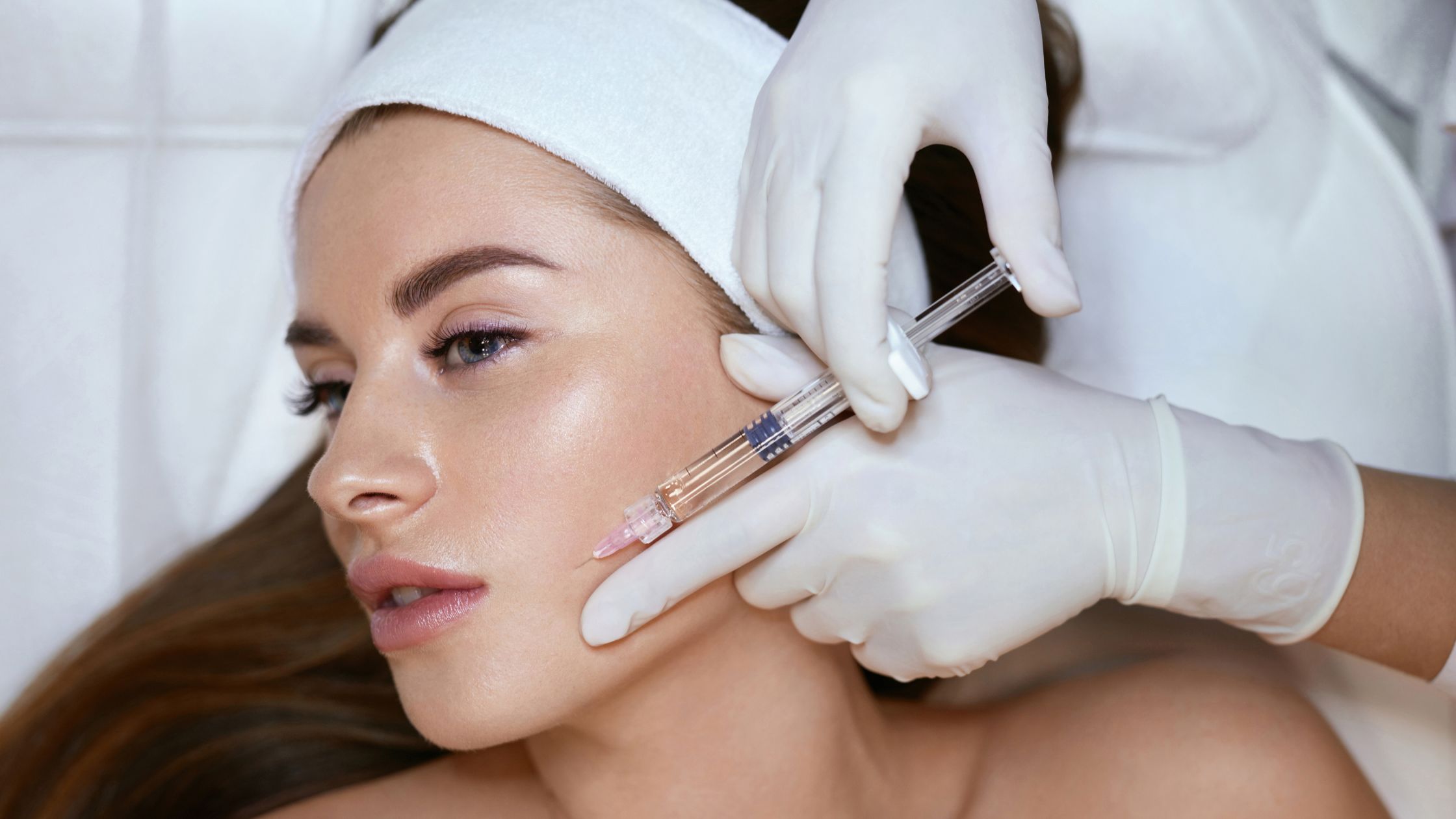Dermal fillers have transformed the world of cosmetic procedures, offering a non-invasive way to restore youthful volume, enhance facial contours, and smooth fine lines. With advancements in filler technology and techniques, patients can now achieve natural-looking results with minimal downtime.
However, understanding the types of dermal fillers, the techniques involved, and how they work is essential to getting the best outcome. In this blog, we’ll explore what dermal fillers are, various filler types, popular techniques, and how to maximize the effectiveness of these treatments.
What Are Dermal Fillers?
Dermal fillers are injectable substances that restore volume and fullness to areas of the face that may have lost their youthful elasticity. They address several common concerns:
- Smoothing lines around the mouth and nose
- Enhancing cheek volume
- Plumping lips
- Improving symmetry among facial features
As we age, the body’s production of collagen and elastin—both essential for skin elasticity and volume—gradually declines. Fillers help to replenish volume in targeted areas, providing a rejuvenated appearance without the need for surgical intervention.
Types of Dermal Fillers
When considering fillers, it’s important to know that not all fillers are the same. Different types of dermal fillers are formulated for specific effects and can be composed of various substances. Here are the most common categories:
Hyaluronic Acid (HA) Fillers
- How It Works: HA is a naturally occurring substance in the skin that retains moisture, giving the skin a plump, hydrated look. HA fillers are widely used due to their ability to provide immediate volume and elasticity.
- Popular Brands: Juvederm, Restylane
- Duration: 6 to 18 months, depending on the formulation
Calcium Hydroxylapatite (CaHA) Fillers
- How It Works: This mineral compound, found in human bones, is often used in fillers for deep wrinkles. It provides a thicker consistency that offers structural support and promotes collagen production.
- Popular Brand: Radiesse
- Duration: Up to 12 months or more
Poly-L-Lactic Acid Fillers
- How It Works: Poly-L-lactic acid is a biocompatible synthetic substance that works gradually to stimulate collagen. It is commonly used for areas with significant volume loss, such as the cheeks.
- Popular Brand: Sculptra
- Duration: Up to 2 years
Polymethylmethacrylate (PMMA) Fillers
- How It Works: PMMA fillers are a combination of collagen and tiny, synthetic microspheres that stay beneath the skin to provide long-term support. This type is often used for deeper facial folds.
- Popular Brand: Bellafill
- Duration: Considered semi-permanent, lasting 2 to 5 years

How Dermal Fillers Work?
Dermal fillers work by injecting a gel-like substance under the skin to restore lost volume, smooth wrinkles, or enhance facial contours. Different fillers can be tailored to achieve specific effects based on their properties, molecular size, and depth of placement.
For example, HA fillers like Juvederm are softer and better suited for finer lines, while CaHA fillers, being denser, work well for enhancing cheekbones or jawlines.
Dermal Fillers Techniques: Achieving the Best Results
Selecting the right dermal filler is just one part of the equation. The skill and technique of the practitioner are equally critical to ensure a smooth, natural look. Below are some of the most effective dermal filler injection techniques:
Linear Threading Technique
- How It Works: The needle is inserted into the skin at a shallow angle, and the filler is injected in a continuous line as the needle is withdrawn.
- Best For: Fine lines, lip enhancement, and superficial wrinkles.
Cross-Hatching Technique
- How It Works: This technique involves a series of perpendicular injections, creating a “mesh” under the skin to provide structure and volume in a targeted area.
- Best For: Deep wrinkles, nasolabial folds, and areas with severe volume loss.
Fan Technique
- How It Works: In this method, multiple threads of filler are injected in a fan shape to cover a larger area and ensure an even distribution.
- Best For: Cheek augmentation, temples, and chin enhancement.
Microdroplet Technique
- How It Works: The filler is delivered in very small amounts across an area to achieve a soft, natural appearance.
- Best For: Lip definition, under-eye areas, and subtle facial contouring.
The choice of dermal filler injection techniques depends on the facial area and the desired outcome. For instance, the cross-hatching technique is excellent for filling deep folds, while the fan technique provides more uniform coverage for larger areas.
Tips for Achieving the Best Results with Dermal Fillers
Ensuring optimal results from dermal fillers depends on more than just the type and technique. Here are some key tips to enhance outcomes:
- Choose an Experienced Provider: Skillful application is essential for natural-looking results. Make sure your practitioner is certified and experienced in dermal filler procedures.
- Understand Your Goals: Communicate clearly with your provider about your aesthetic goals. Pictures of past results can help both you and your practitioner envision the desired effect.
- Start Conservatively: It’s often better to start with a smaller amount of filler and build up gradually, as you can add more filler if needed but cannot easily reverse an overly filled area.
- Follow Aftercare Guidelines: Avoid excessive heat, intense physical activity, and sun exposure immediately after your treatment, as these can affect your filler’s setting process and may increase the risk of complications.
- Regular Maintenance: Dermal fillers are temporary, so scheduling touch-ups can help maintain consistent results.
Potential Side Effects and Safety
Like any cosmetic procedure, dermal fillers come with potential risks. Common, temporary side effects include redness, swelling, and bruising at the injection site. Less common but more severe risks include allergic reactions, filler migration, and, rarely, vascular complications if the filler is accidentally injected into a blood vessel. These risks underline the importance of choosing a highly qualified practitioner for your procedure.
Conclusion
Dermal fillers are a versatile and effective way to enhance facial aesthetics and rejuvenate the skin’s appearance without invasive surgery. By understanding the different types of dermal fillers, advanced techniques, and how fillers work, individuals can achieve a refreshed, natural-looking appearance. However, to truly excel in the art and science of dermal fillers, professional training is invaluable.
At IBCD, we offer an in-depth Clinical Cosmetology Course led by Dr. Arvinder Singh (MBBS, MD-Path), widely regarded as the Father of Cosmetic Dermatology. Our program covers both fundamental and advanced techniques in dermal filler treatments, blending expert instruction with hands-on practice. This approach ensures you acquire the skills and confidence needed to perform these procedures with precision and safety.
Enroll to enhance your expertise and become a certified professional in clinical cosmetology, ready to deliver exceptional, natural-looking results to your clients.








